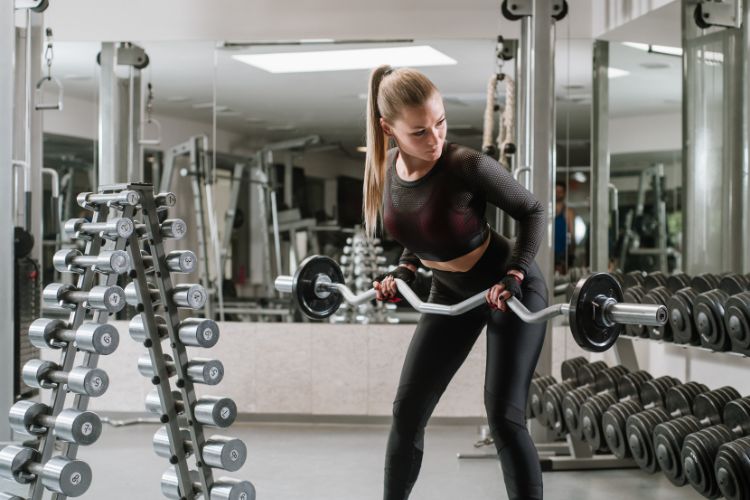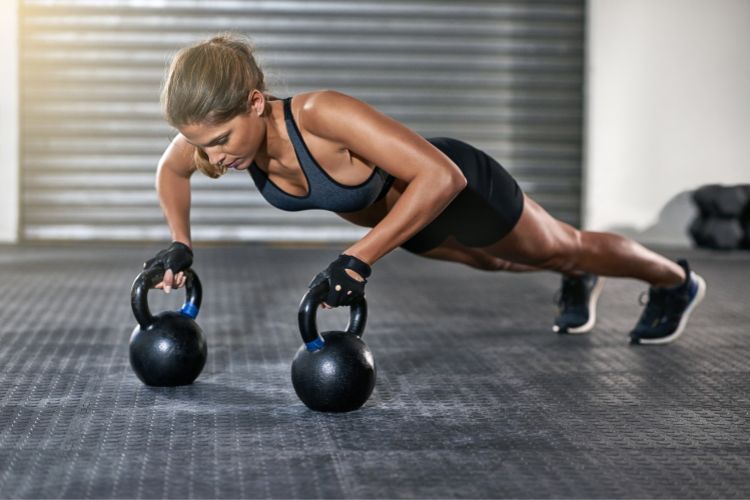Sign up for workout ideas, training advice, reviews of the latest gear and more.






Strength training, often called resistance or weight training, goes beyond building muscles—it’s a comprehensive approach that promotes functional fitness, improves overall health, and enhances daily performance. This post will delve into the fundamentals of physical strength training, the key benefits, different types of strength workouts, and tips on how to start your journey to a stronger, healthier body.
Strength training refers to exercises that apply resistance to muscles to improve muscle mass, strength, and endurance. It’s a critical component of a balanced workout regimen and can be done with various equipment such as weights, resistance bands, or even body weight.
While some think strength training is only for athletes or bodybuilders, it offers significant benefits for all fitness levels and ages. The primary goal is to increase muscle mass, which leads to improved balance, joint flexibility, and bone density. As a result, strength training can also help with daily activities and prevent injury, making it an essential practice for lifelong health.
Strength training stimulates muscle growth by putting stress on muscle fibers, which causes them to repair and grow stronger. This process also promotes bone density, a crucial factor in preventing osteoporosis, especially in older adults.
Building muscle has a direct effect on metabolism. Muscle tissue burns more calories at rest than fat tissue, meaning the more muscle mass you have, the higher your resting metabolic rate. This benefit is particularly useful for weight management, as you’ll burn more calories even when not actively working out.
Exercise releases endorphins, and physical strength training is no exception. It can reduce symptoms of depression, boost self-esteem, and relieve stress. Many people find that setting and achieving strength goals gives them a mental boost, contributing positively to their overall quality of life.
Strength training enhances balance, flexibility, and coordination, which is especially beneficial as we age. Strengthening core muscles, for instance, aids in better posture and spinal health, while leg workouts can help with mobility and stability.
Bodyweight exercises use your own body as resistance, making them an accessible and effective form of physical strength training. Examples include push-ups, squats, lunges, and planks. Bodyweight exercises can be done anywhere and are suitable for all fitness levels.
Free weight exercises like dumbbell curls, bench presses, and barbell squats allow for a wide range of motion, which engages stabilizing muscles. This type of training helps develop functional strength and is highly adaptable as you progress.
Resistance bands offer a versatile and portable option for physical strength training. They provide variable resistance through the range of motion, making exercises like bicep curls, shoulder presses, and squats both challenging and effective.
Gym machines are often used by beginners because they offer guided movements, which can reduce the risk of injury. Examples include leg press machines, chest presses, and lat pull-down machines. Machines can be a great way to target specific muscle groups with support.
Isometric exercises involve holding a position for a set amount of time rather than performing dynamic repetitions. Planks and wall sits are common examples. This type of training is effective for improving muscle endurance and stabilizing muscles.
Starting strength training can feel intimidating, but it’s a journey that can be customized to your current fitness level and goals. Here’s a step-by-step guide to help you get started:
Define what you want to achieve. Are you aiming to build muscle, improve endurance, lose weight, or boost athletic performance? Knowing your goals helps to design an appropriate workout plan.
Form is key to preventing injury and maximizing effectiveness. If you’re unsure, consider working with a trainer or watching reputable instructional videos to ensure you’re performing exercises safely.
Bodyweight movements are excellent for building a foundation. Begin with exercises like squats, push-ups, and planks. Mastering these helps prepare you for more complex and intense strength training.
Increase resistance gradually, whether by adding more weight, increasing repetitions, or trying more challenging variations. This is essential for avoiding plateaus and ensuring continuous improvement.
Squats are a powerhouse exercise for developing lower body strength. They engage the quadriceps, hamstrings, glutes, and core, making them essential for functional fitness.
Deadlifts target the back, glutes, hamstrings, and core. They’re one of the best full-body strength exercises, promoting functional strength and muscle development.
A staple for upper body strength, the bench press targets the chest, triceps, and shoulders. It’s a fundamental exercise for building upper body mass and strength.
Rows, whether with dumbbells or a barbell, focus on the upper back, improving posture and stabilizing the shoulder joint. Strong back muscles are crucial for balance and everyday activities.
Lunges work the quadriceps, hamstrings, and glutes, while also helping with balance and coordination. They’re a great lower-body strength exercise, adding variety to any workout routine.
The shoulder press targets the deltoids, triceps, and upper chest. Shoulder strength is essential for many daily movements, making this exercise a key part of any well-rounded routine.
Designing a balanced strength training routine involves understanding which muscle groups to target and how often to work them. Here’s a guideline for building an effective plan:
For beginners, aim for two to three strength sessions per week with rest days in between. Intermediate and advanced lifters can increase to four or five days, with varied muscle groups on different days.
A full-body workout is suitable for beginners and those with limited time. More advanced routines can be split by muscle groups (e.g., upper body vs. lower body, push vs. pull), allowing for targeted workouts and additional recovery time.
For muscle strength and power, aim for 4–6 reps per set with heavier weights. Muscle hypertrophy (growth), 8–12 reps per set with moderate weight is ideal. For muscle endurance, 12–20 reps with lighter weights works well.
Muscle growth occurs during rest, so allow 48 hours of recovery for each muscle group. Incorporate rest days and prioritize sleep, hydration, and proper nutrition.
Yes! Bodyweight exercises, resistance bands, and dumbbells make it easy to perform effective strength training workouts at home.
For beginners, 30–45 minutes per session is sufficient. Advanced individuals can aim for 45–60 minutes, depending on their routine and goals.
Not necessarily. Lifting lighter weights with more reps can build muscle endurance and strength. However, gradually increasing weight helps improve strength over time.
Physical strength training is a powerful way to enhance your physical activities and health, improve your physique, and increase physical resilience. Whether you’re a beginner or a seasoned gym-goer, this versatile workout style can be tailored to your needs and goals. By incorporating the right exercises, focusing on proper form, and progressing gradually, you can make strength training a cornerstone of a healthier, more active lifestyle.
Stay up to date on the latest women’s health, fitness and lifestyle trends and tips.